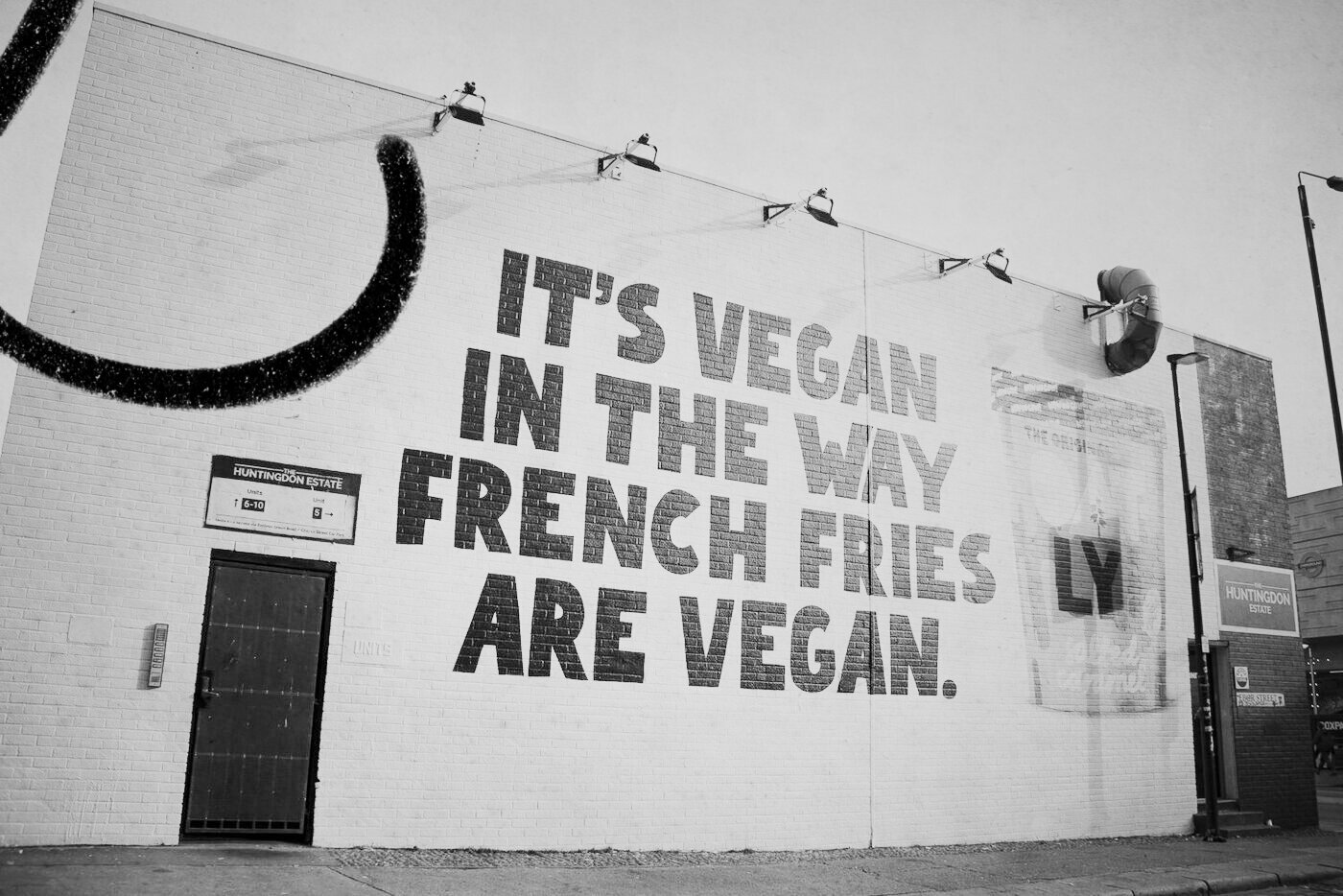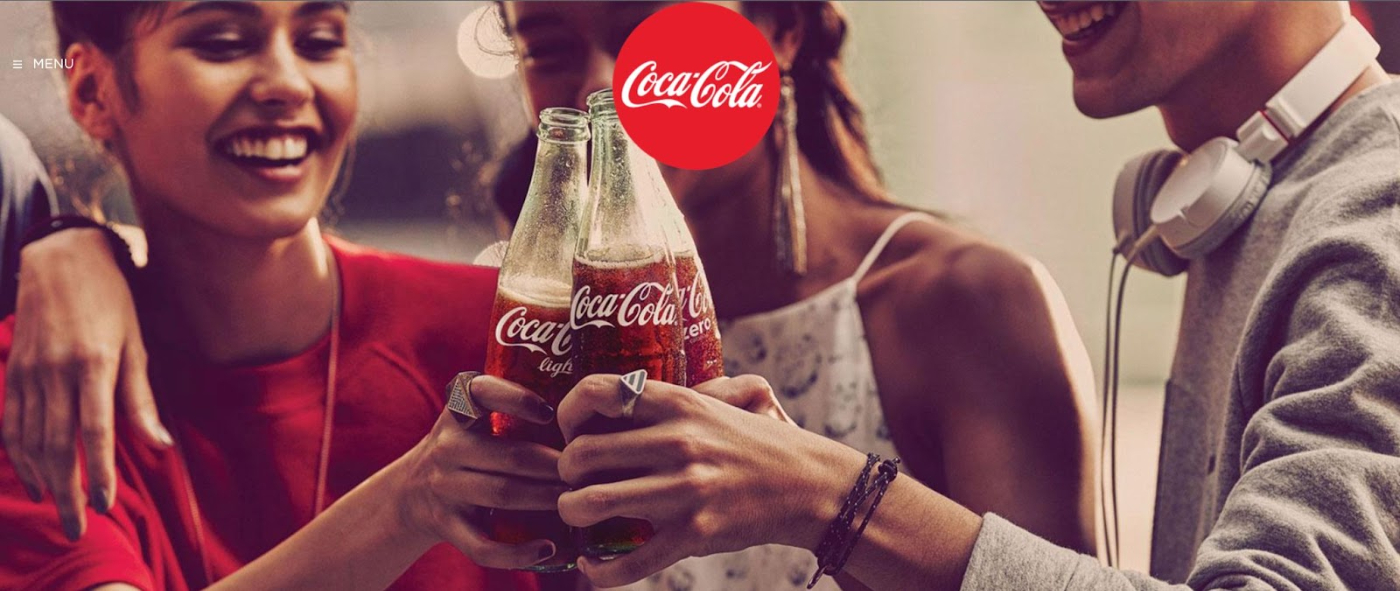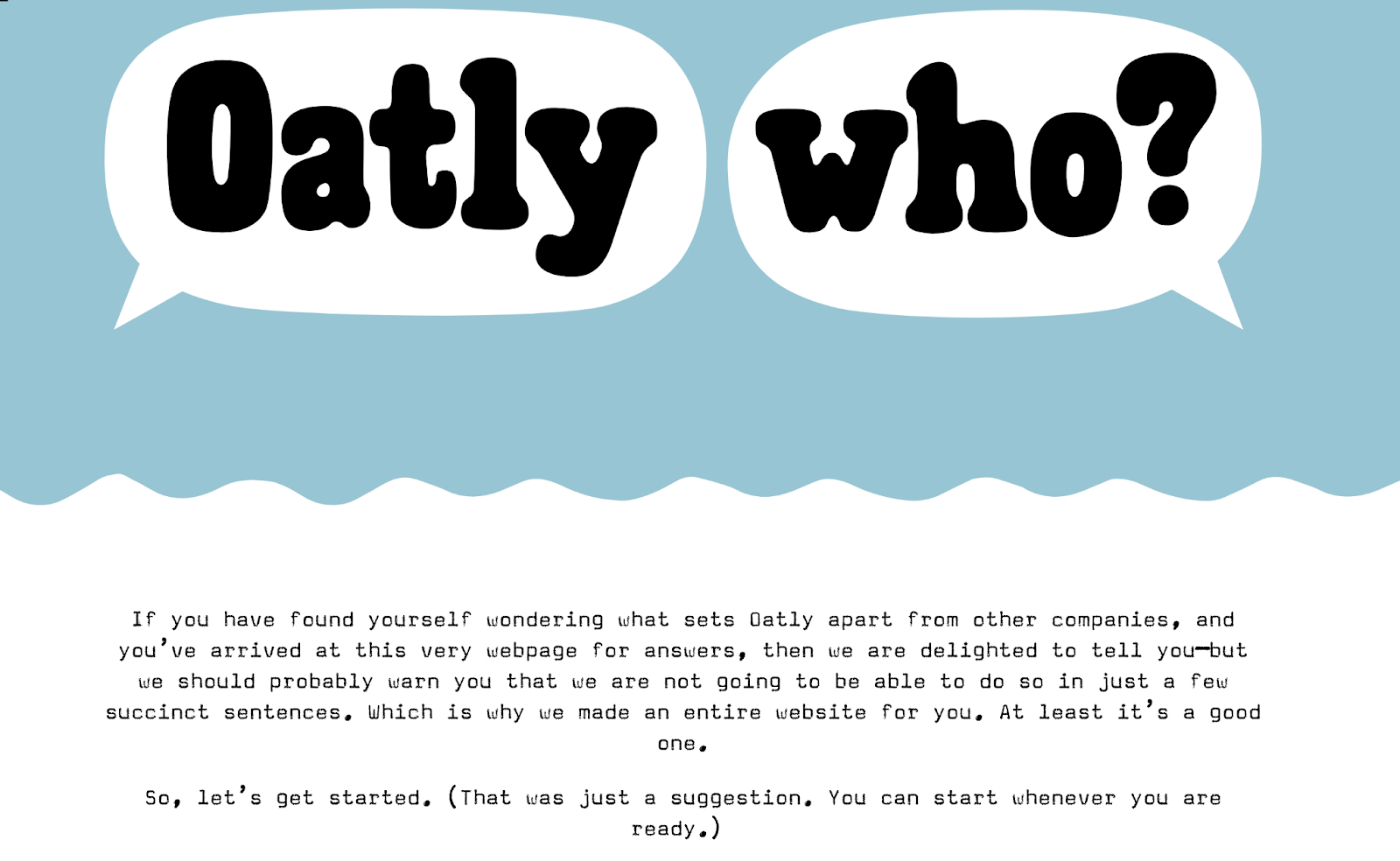
The question is so absurd that it immediately feels like a trick (spoiler: it is!): rank the following 2021 IPOs in order of how much money they made on the first day of trading:
- Squarespace. That essential tool for the creator economy.
- ZipRecruiter. The ubiquitous (to podcast listeners) job recruitment site.
- Oatly. The 28-year-old Swedish company that sells a milk substitute made from oats.
Sure, enough, it’s that last one, the oat milk company, that actually did better than Squarespace and ZipRecruiter combined, raising well over a billion dollars on a $10B valuation. (Squarespace’s valuation was $7.4B, ZipRecruiter’s $2.4B.) How can that be? How many people want oat milk? And how many will buy Oatly’s as opposed to the 5,000 other brands available now in even the most conventional of supermarkets? Are there really more oat-milk lovers than creators who want an easy-to-build website or companies that need to hire the right person?
Well, Oatly did a bunch of things that very few ambitious companies do. They broke many of the well-accepted rules of branding and marketing and sales. They did it by creating a fairly complex brand—more of a story, than a brand, as we’ll see—that takes a while to understand. But, once understood, creates a degree of passionate engagement that more traditional approaches can’t achieve.
...
Since this is the first issue of Masterful Storytelling, I want to make clear at the top:
As the name suggests, this is not a newsletter about valuations or IPOs or stocks. It is about storytelling, specifically how companies and people can tell their story in a way that allows them to find their most passionate audience. But I have been informed that any tech-adjacent newsletter must start with some details of a unicorn IPO and Oatly’s just happens to be a perfect example of the story I want to tell. Oatly is the best example I’ve found, so far, of a major, global company that recognizes that we are leaving the age of Branding and entering the age of Storytelling.
Branding is the thing we’re used to. Branding is what Squarespace is up to: super simple imagery and messaging that is trying to appeal to as many people as possible. They literally say they can do everything to sell anything. This is broad and simple and it has that S icon we all now know.
They are doing the standard thing. Most consumer packaged goods companies have sites that follow a well-worn practice: there’s a clean, simple hero shot showing how lovely their product is, with some clear branding assets: the right Pantone color, the logo, etc.
Just to take two examples:
But Oatly is up to something completely different. In fact, what the frig is Oatly doing?
I can hear a designer’s voice: “I don’t know where my eyes are supposed to go. Everything is screaming for attention. It’s all competing. Songs? And sleeping or singing people, all sorts of weird icons. What am I supposed to do with all this? And the one thing you don’t have is a solid hero shot of someone enjoying the product!”
(You might think that video with the word “WOW” might feature that person happily drinking oat milk. But, no, it’s the company’s Super Bowl ad that is just super long shots of CEO Toni Petersson singing a pretty annoying song with the lyrics “Wow. No Cow.”)
Click on some of the links and there’s even more confusion. I clicked around a fair bit. I came across their celebration of a Black Queer Travel guide long before I found anything that told me I would probably like Oatly’s products. I also saw a lovely black-and-white mini-documentary about a Swedish farmer who switched from cows to oats. Actually, the product pages are among the least pretty or interesting. (It’s possible that’s, in part, because they actually have a lot to hide. While I like Oatly’s storytelling approach, they do seem to follow a well-worn strategy of obscuring their not-so-good-for-you ingredients, as Nat Eliason wrote well in a piece for Every last year. Oh, and while I’m parenthetically beating up on Oatly, I’ll also say that some of their writing is a bit too cute and self-indulgent.)
Oatly is obsessed with telling stories: stories about oats and Oatly, sure. But, also, stories about people they like—such as Paula Apkan, who created the Black Queer Travel Guide—and stories about things they care about, like the environmental impact of oat farming versus dairy farming.
There is a sort of uber-story (I would have said meta-story, but, oy, that term “meta” brings up too much these days) to the whole project: Oatly is a whole THING. You might not want to waste your time. In fact, there are places in the site where they all but dare you to keep reading, like these lines in their version of an About Us page:
Oatly’s story is, in itself, quite interesting. Rickard Öaste, a food scientist at Lund University in Sweden, figured out a way to maintain long chains of soluble fibers while extracting liquid from oats. This allowed the resultant oat milk to be more dairy-like. It had structure that could be manipulated to produce liquids of varying thicknesses and, even, yogurts and ice creams and other things that were better than other alternatives—like rice or almond milk—at matching the texture and characteristics of dairy.
With his brother, Björn, Rickard started Oatly in 1993 and it remained a relatively small company, selling an earnest product in traditionally branded packaging—hero shots, splashing milk shots, simple, consistent logo—to customers in Scandinavia. It was the kind of thing you’d find on a big shelf of other earnest vegan foods.
They hired CEO Petersson in 2014. He had big ambitions to become a major global player. He decided to focus on baristas. If he could convince that population of tattooed and pierced milk know-it-alls, he could conquer the world. But if you ever ordered the wrong thing at a hipster coffee shop, you know that the best baristas don’t give anything up easily. Oatly had to actually be a company they would trust and feel an affinity for. That required Oatly to make a binding commitment: to so loudly prove they are what they say they are that no barista could suspect it’s secretly the product of some massive, cynical conglomerate. The company has to actually be bad at traditional marketing to show they are not traditional marketers. They have to actively turn off some people. It is, rather theatrically, not for everybody.
...
Let’s go back to Squarespace, the company that was doing things more traditionally, using simplistic, broad-reach branding.
In a video on their site, Squarespace founder and CEO Anthony Casalena seems to be competing in a contest for who can say the most buzzwords and statistics with the least amount of emotion or inflection in the shortest period of time.
Squarespace is obsessively, bizarrely, full-throatedly NOT making any specific commitments to anybody. Casalena explains that whether you are selling physical products, classes, ideas, whatever the hell you got, they’ll sell that for you.
As much as I find myself drawn to storytellers telling specific, compelling stories about their company, I assumed that traditional branding firms would do better. Wouldn’t you? A weird, confusing oat milk company couldn’t possibly trounce the most well known website design firm that does, in their own words, everything for everyone.
Squarespace has Oatly beat on nearly every dimension. Its Total Addressable Market is way bigger: more people want websites than oat milk, I have to assume. Squarespace is THE generic term for easy-to-build site, whereas Oatly is competing in a crowded field of milk alternatives (not to mention competing with milk itself). And Squarespace can get a ton more money from each of its users. What’s the best Oatly can hope for from any customer—that they buy a box a week for $5 a pop?
...
There’s a crucial paper written in 1992 by the economist Laurence Iannaccone called Sacrifice and Stigma: Reducing Free-riding in Cults, Communes, and Other Collectives. Journal of Political Economy. You can get it at JSTOR. (If you don’t have access to JSTOR and don’t want to pay for the article, I would never suggest you google scihub and paste the JSTOR link, since that would violate copyright.)
Iannaccone addresses a fascinating puzzle in some religious faiths and in other groups that call upon members to make long-term commitments to each other. Think of Ultra-Orthodox Jews or the Amish. When members of either group have financial or medical difficulty, other group members will step in and make sure to take care of the sick or needy. I have friends in both those groups. I remember an Amish friend telling me he was going to visit an older man for an afternoon. I told him I was surprised because he had told me, once, how mean and awful that older guy is. My friend said that, yes, that old guy is mean and awful and nobody likes him and he has visitors almost every day.
One major challenge in such a group is that some might become free-riders. Why not say you are Amish or that you’re a Hasid when you need help and then live your life however you want when you don’t? That’s why, Iannaccone suggested, such groups have stringent markets of who is in and who is out. What you wear, eat, do on religious days, how you get around (buggies, no cars on Saturday) are major sacrifices that govern your entire life.
Oatly is up to something similar. The company wants picky people with a lot of options to make a long-term commitment to them. Specifically, they want baristas, the pickiest people (when it comes to alternative dairy products), to make a public show of their support for Oatly. If you were a pride-filled barista, wouldn’t you worry that Oatly might get you and your ilk to support them, borrowing your cool, and then turn around and become some cheesy, crappy everything-for-everyone company? For you to make a binding commitment, you want them to make a binding commitment first. You want Oatly to cut off other options. It has to be loud and weird in a way that will be hard to shift.
Brand loyalty shares some similarities with the idea of binding commitments. I haven’t regularly drunk soda for years, but if I did want a soda, I would reach for a Coke every time and wouldn’t ever consider a Pepsi, much less a Mountain Dew. Lots of traditional brands have become community identifiers—in rural Vermont, where I live, Carhartt apparel plays the role of signalling authentic rurality. When I moved here from deep hipster Brooklyn, I was excited to buy some Carhartt hoodies and a jacket. Though several people have pointed out that they are too clean and just reinforce how much of a big city interloper I am.
There is not always a clear line between a brand-based and storytelling-based company. I’m finding myself, right now, struggling to decide where Carhartt fits.
I think one way to ask this question is: would you ever consider tattooing the company logo on your body?
In a later paper, Iannaccone used prison gangs to explain the theory. Let’s say you’re incarcerated and you are afraid that someone might attack you. You could tell members of a gang that you’ll protect them if they protect you. But what if you are a free rider, seeking their defense when you need it but are nowhere to be found when they need it. Maybe you could even align with their enemies--creating pacts with every gang in the prison.
Tattoos—Iannaccone particularly focuses on neck tattoos—are a great example of a binding commitment. If you get an MS13 tat or a swastika on your neck, you are dramatically cutting off your ability to join other gangs or to step away from the one you’re in.
Branding is wearing a t-shirt with a big image from some celebrity you happen to like right now. Storytelling is getting a tattoo that you can’t, easily, remove.
...
The central thesis of this newsletter is that we are undergoing a massive shift from an economy built around Brand to one built around Storytelling. Once you see how these two things are distinct and require wildly different business strategies, it’s hard to not see them everywhere.
We will go deep on all sorts of dimensions of this transition—I really do think you’ll find it fascinating, I sure do—but to start with an overly-simplified version:
The modern idea of a brand was first seen in the late 1800s and reached its maturity in the 1950s. Brands are an essential tool in a mass-market economy in which business success comes from selling the highest quantity of some thing to the largest number of people, while pricing the goods as low as feasible (on the “curve of indifference,” as the economists say). You are creating products that are perfectly fine for everyone, if not super exciting to anyone.
One key feature of branding is that it reduces cognitive load. Brands are simple things you can take in at a glance: a Pantone color, a logo, a package shape. It’s actually a miracle that you can walk into a supermarket with 30,000 unique products and your brain doesn’t just shut down from the immense amount of information. Even if you go shopping in another country, where you know few of the brands, you can very quickly pick out the dozen or so things you want, ignore the 29,000 things you don’t, and ponder a few things you’re not sure about.
Brands might identify broad demographic groups as their core target: Mountain Dew is reaching different people than Naked juice, but they are both owned by the same company so you’re not going to see a lot of powerful, passionate, potentially alienating commitments from any Pepsi-owned product. Instead, you see words that try to convey some sort of feeling without actually saying anything at all. Mountain Dew stands for “doing you with Mountain Dew” and Naked is “dedicated to goodness inside our bottles,” but neither has, say, a strong opinion about Black queer travel. Think of Pepsi’s hilariously disastrous attempt to say *something* about *something* without saying *anything* about *anything* with their Kendall Jenner “protest” ad. That’s what happens when you let a bunch of brand people try to tell a story. They’ll be so fixated on not upsetting anyone that they might use a lot of words and images to say nothing at all.
Storytelling shares some similarities with branding, which is why they are often conflated. Storytelling also seeks to engage an audience, transforming a corporation and its products into some combination of feelings, descriptions, imagery, and the like so that potential customers can figure out if they might like the thing and existing customers can quickly find the thing they already like. Both brand and story solve the problem of matching: getting the “right” products into the hands of the “right” consumers.
But their goals are quite distinct. One of the core values of branding is immutability. The logo, the color, the package shape, changes very rarely or not at all. Branding needs to be simple, consistent, predictable. Which means branding is fairly thin. You get the whole idea in a glance.
Storytelling is focused on narrow matching. Rather than trying to match with the largest possible audience, storytelling seeks to engage its core audience with passion and specificity, even if that means infuriating some other group. The group you’ve engaged has a lot more to work with when there is real storytelling going on. You can dig far deeper and linger there. You can return, later, and see new things.
For much of the past 140 years or so, branding was the better way to go. Our economic system, with its fixed supply chains and distribution channels and retail gatekeepers, rewarded the companies that sought the largest customer base with the fastest method of converting the curious to customers.
...
Oatly is just one company. And it’s not necessarily going to succeed. It’s had some tough supply-chain issues that led to its stock price falling by a third (some believe this is a sign of impending disaster, while others say this is a transitory phenomenon). (And a cynic might point out that some of the biggest scam artists in history have been great storytellers, like Elizabeth Holmes or, depending on your views, Larry Ellison and a good percentage of Wall Street.) Businesses can’t just have a good story. At some point they need products or services that someone wants and is willing to pay money for, preferably more money than it costs to produce the thing. In other words, a great story-based company is built on both poetry and math.
Storytelling doesn’t solve everything and isn’t always going to be the right choice. But it’s a lot more fun, a lot more authentic, and—I think—is clearly a more profitable move for a lot of companies. If your business model is to get a tiny margin on a huge volume of sales, then you are more likely to benefit from a brand approach. But if you want to make a high margin from a truly fanatic audience, then storytelling is for you.
The Only Subscription
You Need to
Stay at the
Edge of AI
The essential toolkit for those shaping the future
"This might be the best value you
can get from an AI subscription."
- Jay S.
Join 100,000+ leaders, builders, and innovators

Email address
Already have an account? Sign in
What is included in a subscription?
Daily insights from AI pioneers + early access to powerful AI tools













Comments
Don't have an account? Sign up!